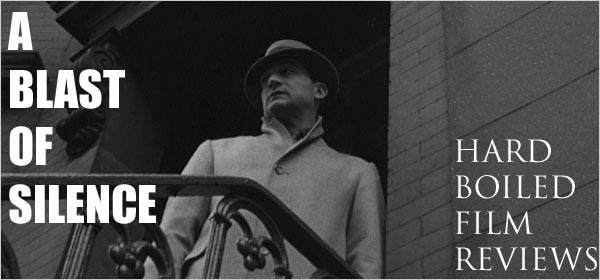

Calling Fritz Lang ahead of the game would be quite the understatement. Lang, who began his career during the silent era of 1919, constantly set the bar during the early stages of cinema with his revolutionary films that spanned from fantasy dramas to thrillers to art films.
Lang was a student of the German Expressionism style and it showed in his films. The style is categorized by the use of light versus dark and suffocating interiors and set pieces of an unrealistic nature, as seen in Robert Wiene’s The Cabinet of Dr. Caligari. The plots and stories of German Expressionism typically dealt with oppressive themes such as madness, betrayal or the threat of a higher power. Sometimes the themes would mix with supernatural or mystical elements. This, combined with the sometimes absurd set pieces, created a dreamlike feel for a good number of the Expressionism films. Expressionism is seen as being important for influencing popular genres such as the early horror films and film noir.
Lang’s first masterpiece was his 1922 crime epic Dr. Mabuse the Gambler. Gambler is a four hour silent film that was originally told in two parts. The film is supposedly inspired by Al Capone. Most film historians point out that this depiction of one of film’s first “super-criminals” is foreshadowing Adolf Hitler’s reign of Germany. Dr. Mabuse is a psychologist and uses powers such as hypnotism to become a con artist achieve his evil goals. With enough patience from the viewer, Dr. Mabuse the Gambler is a tremendously sprawling film qualitative of the German Expressionism genre and at the same time a landmark gangster film glimmering with examples of things to come in the future of cinema.
In 1927 Lang created his next classic with Metropolis. This futuristic dystopian focused on the clash between workers and owners in an urban setting of capitalism – a common theme for many films these days. Metropolis was the most expensive film of its time and this was for a good reason. Lang’s lavish special effects still impress to this day. The elaborate settings have links to the German Expressionism Lang began with but are combined with a sense of art deco and contemporary modern art style. Metropolis’ contributions to the science fiction genre are endless. In 2008 a 16mm reduction negative of the original cut of the film was found in a film museum’s archives in Argentina – something which was long considered lost. If you haven’t seen this masterpiece there will be no better time to see it when the entire film is released for the first time ever on DVD and Blu-ray in 2009.
From here Lang went on to create the espionage thriller Spies and the widely considered first ever “serious” science fiction film Woman in the Moon. While both films are huge successes for Lang, I’ll direct most of my attention to Lang’s first “talkie”, his 1931 masterpiece M. M is a film that deals with the then taboo subject of a child murderer. Peter Lorre’s lead performance as Hans Beckert, the murderer, jumpstarted his career and lead to him being given many similar roles as a villainous character. Most of Lang’s achievements with M come from subtleties such as a unique way of capturing the image or the use of whistling in one of the film’s key scenes. M is also seen as a major precursor to the film noir genre America adopted in the 1940s. Most of this inspiration comes from the dark and stylish cinematography Lang utilized to create his atmospheric film.
After Lang left Germany, the country that he fared so well in with his early work, he came to the United States. Lang worked on a variety of types of films including the film noir genre he helped inspire, westerns with Henry Fonda, and war films. Lang is responsible for some of film noir’s greatest films including Scarlet Street, Woman in the Window and The Big Heat. Lang left a legacy of being one of the most inspirational film directors of all time. He left an exhaustive catalogue of work of carefully created films. If you’d like to check out where cinema began and how it grew, examining Lang’s work alone would do you good.
Essential viewings: Destiny, Dr. Mabuse the Gambler, Metropolis, Spies, M, Fury, The Big Heat, Scarlet Street, Woman in the Window.




No comments:
Post a Comment